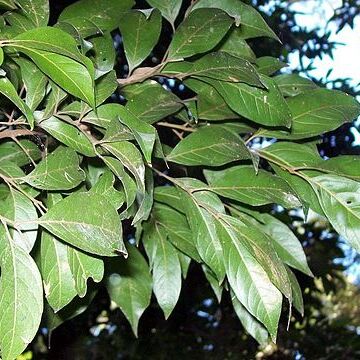Trees with saponin in bark, twigs and leaves. Branchlets hairy towards apex. Leaves paripinnate; leaflets opposite or alternate, entire; lower surface with clavate glands, and raised lateral veins. Inflorescence axillary, polygamo-monoecious, panicle-like or raceme-like. Flowers regular, pedicellate. Calyx cupular, lobes 5, imbricate. Petals 5, shortly clawed, with 2 broad, villous, crested scales. Disc complete, glabrous. Stamens 7 or 8; filaments filiform, hairy. Ovary 3-locular, ovule 1 per locule; style filiform, persistent. Fruit obovoid or broadly ellipsoidal, angled, sometimes winged, cuspidate, 3-locular, loculicidally dehiscent; valves slightly fleshy, glabrous inside, glabrous or hairy outside. Seed usually ellipsoidal; aril thin, enclosing seed.

